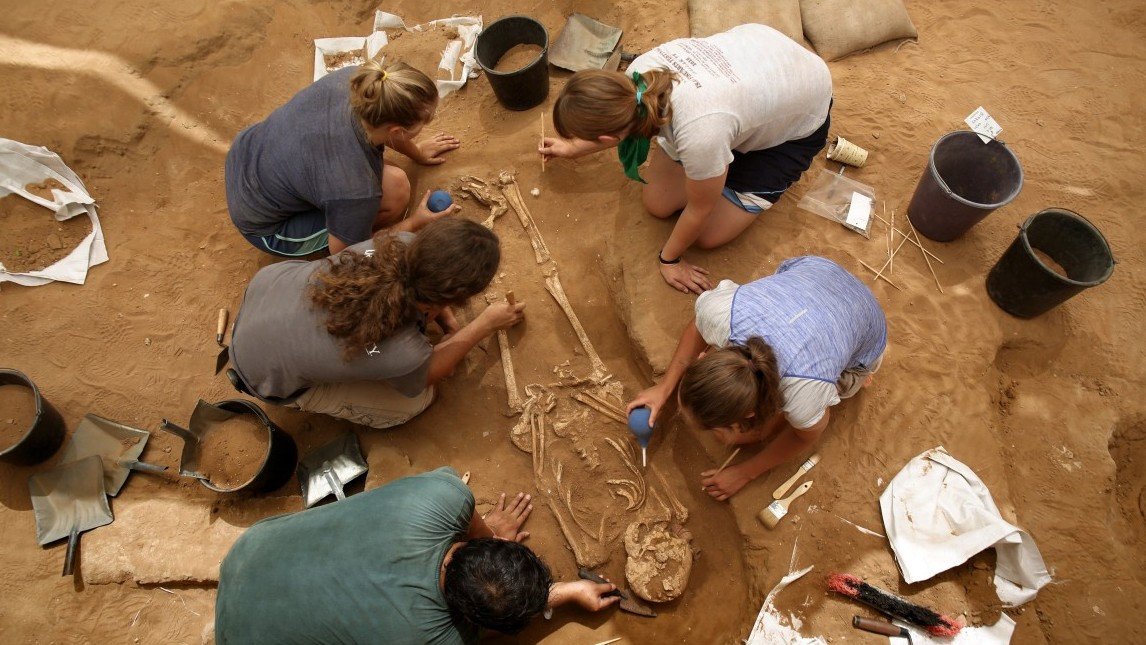
In the past few years, researchers and scientists from around the world have discovered phenomena that have left the world in shock. These discoveries span a myriad of fields, for example., history, medicine, and space. This is the list of those discoveries which is unbelievable or hard to digest the truth of it.
The Best Candidate for Extraterrestrial Life So Far

For years, astronomers, space enthusiasts, scientists, movie makers, and pretty much anyone curious about space have theorized about the existence of aliens. However, these theories and hypotheses have remained just that until an unbelievable discovery in 2017.
On the 20th of April 2017, researchers from the Harvard-Smithsonian Center for Astrophysics reported the discovery of a new planet 40 light-years from Earth, named LHS 1140 b. The dense and rocky planet orbits the red dwarf LHS 1140 b. A red dwarf is a small star that’s a bit similar to the Sun in terms of how it acts but it has a low luminosity and is cooler. According to scientists, the LHS 1140 b passes in front of its star as it orbits just like the earth does. It has probably retained most of its atmosphere because it is in the habitable zone, it receives roughly half as much sunlight from its star as the earth does and it is larger than Earth.
According to lead author Jason Dittman, there’s no better target for one of the greatest quests in science, the search for evidence of life beyond Earth or in other terms, aliens.
A New Shape

Geometry has a new shape known as the scutoid. In basic math, students learn about the elegant shapes that make up the world, triangles, rectangles, prisms, squares, cubes, etc,. However, up until 2017 no one had discovered the scutoid. On July 2017, a team of scientists published a paper on the nature Communications journal that enumerated the discovery of this new shape. The shape looks like a bent prism with five slightly slanted sides and one corner that’s been cut off. The most interesting aspect of this discovery is not so much that math has a new shape but rather the fact that this new shape is all over your body.
According to the paper, the scutoid is the shape that a group of cells in your body take to enable them to pack tightly and efficiently into the different curves of the various organs of your body. Essentially, anytime cells pack into Stew tights, they maximize stability and minimize energy use. According to the paper, the discovery of this new shape can aid engineers who grow artificial organs to create more accurate and delicate human-made tissues.
Humans Played a Role in Past Primate Extinctions

In 2004, scientists excavated a tomb that belonged to the grandmother of China’s first emperor, Qin Shi Wang. The excavations unearthed various items such as silver, gold, Jade, engraved pottery and bones of exotic animals. However, the most curious find was the bone fragments of an unusual-looking Gibbon. The Gibbon which is already extinct suggests that long before the modern age, human populations played an integral role in wiping out primate populations.
James Hansford, one of the authors of the study noted that very little is known about primate extinctions. He goes on to state that the discovery of the Gibbon bone fragments is an important step in helping scientists explain the influence of humans on past primates. Scientists named the new Gibbon “junzi imperialis” and they placed it in an extinct genus and species. According to lead researcher Dr. Samuel Turvy stated that “before this discovery scientists knew that human activities were affecting all of the world’s existing Apes”. However, no one had ever thought that human activities actually drove some Apes to extinction.
The Sixth Mass Extinction

According to a study published in 2015, the earth is witnessing the start of a mass extinction event for the first time in 65 million years. The study led by gerardo Ceballos was initially designed to determine how activities have affected the extinction rate of vertebrates. However, during the study the biologists discovered is that current extinction rates are 50 times higher than background extinction rates that suggests an imminent extinction event.
Prior to this, scientists had identified five extinction events that wiped out various percentages of life on Earth. The first one is the late Ordovician crisis that occurred 445 million years ago and wiped out 57% of Marine genera. The second is the late Devonian event that occurred 380 million years ago. The late Devonian extinction event wiped out 50% of Marine genera. Soon after this about 262 million years ago, the middle Permian crisis one of the most devastating destroyed over 80% of Earth’s species.
The last two extinction events, the late Permian and the Late Triassic are the most well known because the former destroyed 96% of species and the latter paved the way for diversification of dinosaurs in the Jurassic period.
1500 Year Old Sword

In a scenario reminiscent of Excalibur, the ancient sword that belonged to King Arthur. An eight-year-old girl pulled a 1500 year old sword from a Swedish Lake in 2018. The 33 inch sword dates back to the Iron Age, 5th or 6th century AD and it was perfectly preserved with sword skin in leather and wood. Excited archaeologists and conservators from the Joan copings Lon’s Museum are still examining the sword but at the time of publishing in 2018, they were hopeful that they could exhibit the sword within a year. Moreover, archaeologists returned to the lake to see if they could find more artifacts and true to their expectations, they found a piece of metal jewelry that dates back to between 300 and 400 AD.
An Ancient Aztec Temple

After the deadly quake that devastated Mexico in 2017, archaeologists used radar to scan a 13th century Teotihuacan pyramid located in the south Mexico City. They were scanning for damage but instead they found something amazing. Evidence of an old temple that dates back to 1150 AD.
According to scientists, the temple which sits inside the double pyramid is most probably connected to the Teotihuacan civilization which existed in the 12 hundreds. Experts already knew of the older pyramid that sat inside the outer line. However, no one knew that an even older temple was beneath the two pyramids. Archaeologists found ceramic shards and an incense burner in addition to the structure. Later in the year, after the discovery of the temple another team of researchers found a hidden tunnel underneath the pyramid of the moon.
A Baby in a Bag

In 2017, a team of Philadelphia physicians made a significant stride towards the creation of artificial or synthetic wombs when they successfully created a uterus like synthetic bag that was able to sustain premature fetal lambs. The physicians placed the premature lambs in transparent bio bags just 105 days after they had started developing, in comparison, that is roughly 22 weeks of human development. At such a gestation period neither lambs nor humans can survive on their own.
The physicians kept the lambs in the bio bags for four weeks and within that span the Lambs developed lungs hair and eventually got to a place where they could survive. Incredibly, all eight lambs in the trial survived and continued to develop normally. This discovery is crucial because the leading cause of newborn deaths is premature birth. The physicians are already in talks with the FDA and if everything goes according to plan, the technology might be used on humans in the next few decades.
$17 Billion Treasure

In 2015 researchers from Woods Hole Oceanographic Institution discovered what they called the holy grail of shipwrecks off the coast of Cartagena in Colombia. 3 years after the discovery in 2018, the researchers finally revealed details about the ship. The ship is a 310 year old Spanish galleon that sank in 1708 during a battle with British ships in the Spanish Succession war. The ship was carrying tons of treasure that includes gold, silver, and emeralds. After careful analysis, experts estimated that the treasure aboard the ship was worth 17 billion dollars.
Disputes are ongoing on who is the rightful owner of the treasure. Spain has laid claim to the wreck saying the ship flew under its flags, a private company see search Armada has also claimed the treasure saying they were the first to identify the wreck in 1982. Finally, Colombia has staked a claim on the ship because the wreck was found in Colombian waters. As of 2019 there is no decision on who is the rightful owner of the treasure. However, the discovery is still unbelievable especially with regards to the value of the treasure.
Slaughter Free Burgers and Sausages

In 2018, a Dutch start-up meatable announced that they had discovered how to grow the world’s first slaughter free steak. Up until 2018, most lab-grown meat startups had faced a significant hurdle because the cells for the food came from slaughtered cows, that negates the whole reason for lab-grown meat which is the elimination of animal cruelty. However, meatable has found a way to grow the meat and not use the fetal bovine serum that comes from slaughtered cows. Instead, they’re using pluripotent stem cells from the umbilical cord of animals, these cells have a unique ability that allows them to turn into any cell. For example., muscle or fat without the need for a serum.
Consequently, no animals need to be slaughtered and they’re using a part of the animal that could have just been thrown away. The company aims to start serving the slaughter free burgers and sausages in roughly four years.
Monkey Clones

In one of the most controversial discoveries of recent times, scientists found a way to clone a pair of macaques using a method that in theory could be used to clone humans. Chinese researchers published the paper in January of 2018, detailing how they used the same method that yielded the famous clone “Dolly the sheep” to clone monkeys.
This is the first time in the history of the world that primates have been cloned in such a manner. Initially, the scientists had tried cloning by splitting an embryo, the technique worked but embryo splitting can only produce a few copies. This method however can produce an unlimited number of copies. The method is also a big deal because while scientists have cloned other species like rabbits, cows, and dogs, over 20 species. This is the first time non-human primates have been cloned successfully using this method. That means, the method could also be applied to other primates, most notably humans. The controversy is ongoing but the authors of the study insists that they do not want to clone humans.




